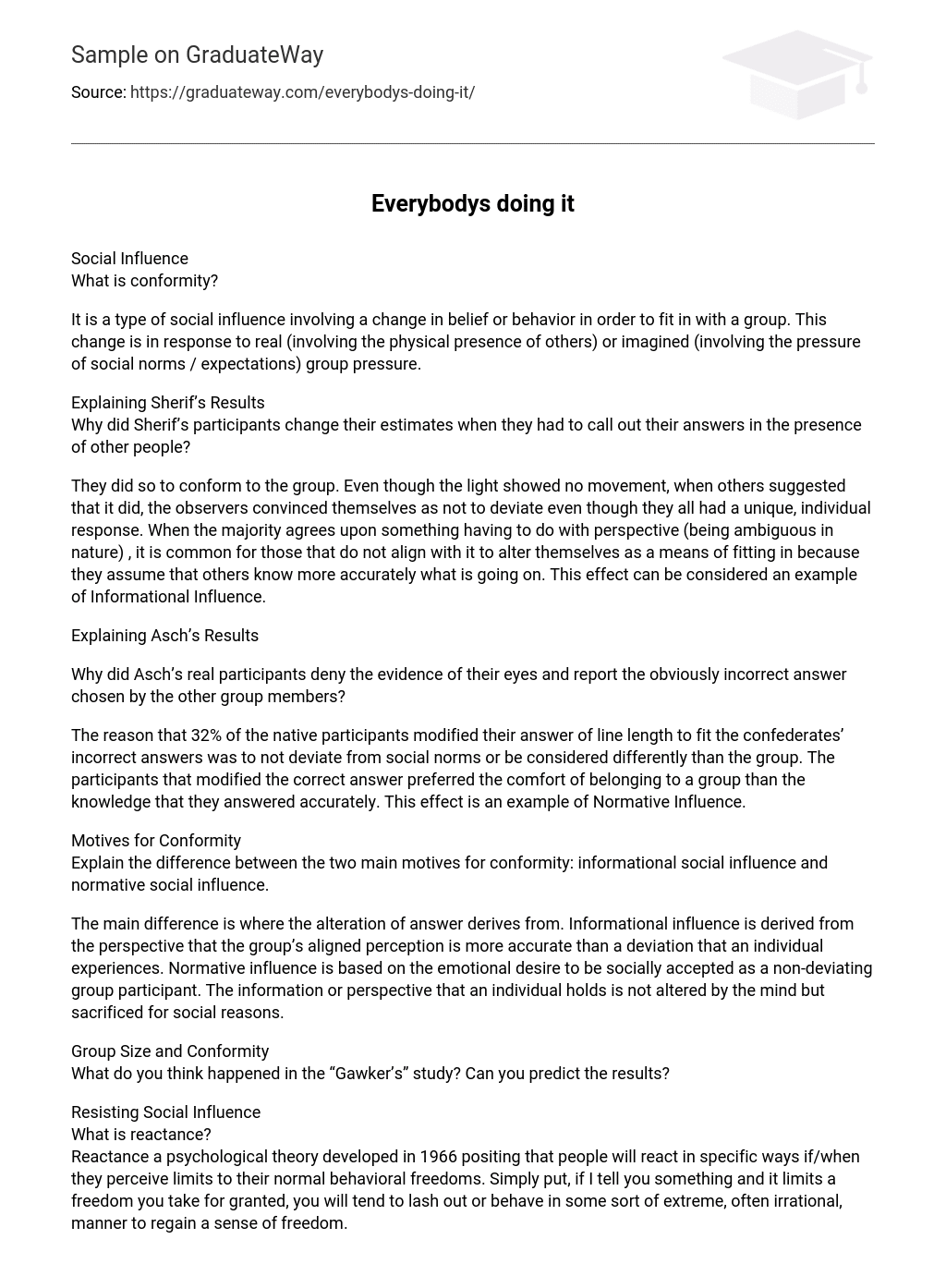Social Influence
What is conformity?
It is a type of social influence involving a change in belief or behavior in order to fit in with a group. This change is in response to real (involving the physical presence of others) or imagined (involving the pressure of social norms / expectations) group pressure.
Explaining Sherif’s Results
Why did Sherif’s participants change their estimates when they had to call out their answers in the presence of other people?
They did so to conform to the group. Even though the light showed no movement, when others suggested that it did, the observers convinced themselves as not to deviate even though they all had a unique, individual response. When the majority agrees upon something having to do with perspective (being ambiguous in nature) , it is common for those that do not align with it to alter themselves as a means of fitting in because they assume that others know more accurately what is going on. This effect can be considered an example of Informational Influence.
Explaining Asch’s Results
Why did Asch’s real participants deny the evidence of their eyes and report the obviously incorrect answer chosen by the other group members?
The reason that 32% of the native participants modified their answer of line length to fit the confederates’ incorrect answers was to not deviate from social norms or be considered differently than the group. The participants that modified the correct answer preferred the comfort of belonging to a group than the knowledge that they answered accurately. This effect is an example of Normative Influence.
Motives for Conformity
Explain the difference between the two main motives for conformity: informational social influence and normative social influence.
The main difference is where the alteration of answer derives from. Informational influence is derived from the perspective that the group’s aligned perception is more accurate than a deviation that an individual experiences. Normative influence is based on the emotional desire to be socially accepted as a non-deviating group participant. The information or perspective that an individual holds is not altered by the mind but sacrificed for social reasons.
Group Size and Conformity
What do you think happened in the “Gawker’s” study? Can you predict the results?
Resisting Social Influence
What is reactance?
Reactance a psychological theory developed in 1966 positing that people will react in specific ways if/when they perceive limits to their normal behavioral freedoms. Simply put, if I tell you something and it limits a freedom you take for granted, you will tend to lash out or behave in some sort of extreme, often irrational, manner to regain a sense of freedom.





